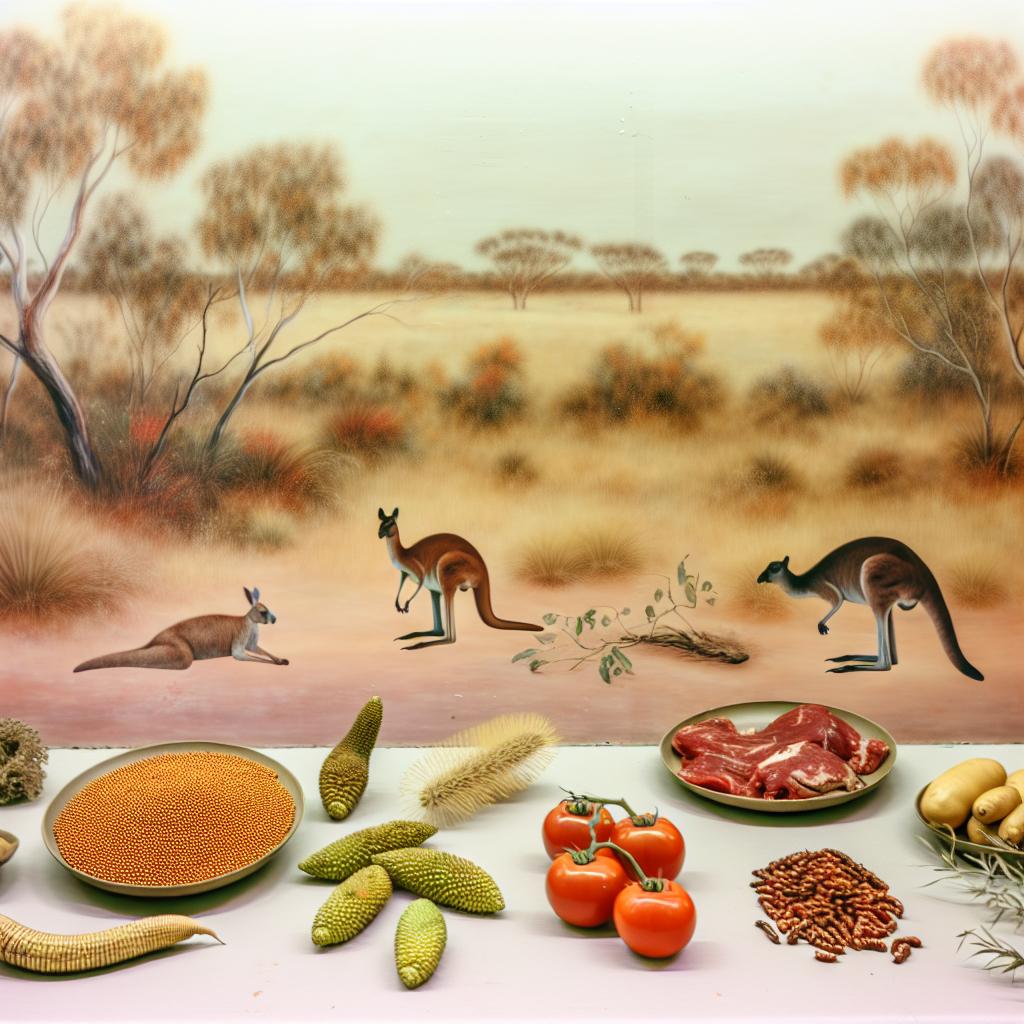
Traditional Aboriginal bush tucker foods.
The Cultural Significance of Bush Tucker Foods
Understanding traditional Aboriginal bush tucker foods offers a profound insight into the rich cultural heritage and ecological knowledge of Aboriginal Australians. These food sources have sustained Indigenous communities for thousands of years, embodying a deep connection to the land and seasons. Bush tucker is not merely about sustenance; it reflects a sophisticated understanding of Australia’s diverse and challenging ecosystems.
Local Ingredients and Their Uses
Aboriginal Australians relied on their profound knowledge of the environment to utilize various native ingredients. Berries, seeds, roots, and animals were gathered and hunted from the land, each with its unique place in the diet. For instance, Quandong, a native peach, is highly valued for its tart flavor and nutritional benefits. Meanwhile, the native animals such as Kangaroo and Emu have been significant sources of protein.
This deep reliance on local ingredients demonstrates an intimate understanding of the natural environment, enabling Aboriginal Australians to identify and cultivate edible resources that many others might overlook. Seasonal harvests were meticulously planned, with the timing of food collection playing a crucial role in community sustenance and cultural practice.
Plants as Staples
Bush tucker is abundant with a variety of plant-based foods. The Witchetty Grub, found in the roots of the Witchetty bush, provided essential nutrients. Another key plant is the Bush Tomato, also known as Desert Raisin, which is rich in vitamins and often used in sauces and chutneys.
These plants were more than mere sustenance; they served as symbols of seasonality and cycles of renewal in nature. Their role in Aboriginal society extended beyond the nutritional aspect; they were often involved in trade, medicine, and as a means of cultural exchange.
Fruits and Berries
Australia’s vast landscape is home to diverse fruits and berries. Kakadu Plum is particularly significant due to its high Vitamin C content, often used as a natural preservative. The Finger Lime, with its caviar-like pulp, is renowned for its zesty flavor and nutritional properties.
These fruits and berries represent a vital connection to the land, revealing the diversity and richness of native Australian flora. Their usage in making jams, medicines, and even ceremonial foods underscores their importance in daily Aboriginal life and broader cultural practices.
Cooking Techniques
Traditional cooking methods enhance the flavor and nutritional value of bush tucker. Techniques such as roasting on hot coals or cooking in underground ovens impart distinct flavors and retain essential nutrients. These methods highlight the ingenuity of Aboriginal Australians in utilizing available resources.
The cooking practices were often communal, offering an opportunity for social interaction and the transmission of knowledge. Skills and recipes were passed down through generations, with elders teaching the young through demonstration and participation, ensuring the survival of cultural traditions.
Cultural Stories and Traditions
Bush tucker is interwoven with stories and traditions passed down through generations. Foods are not merely resources but are part of a broader cultural narrative and are often included in cultural ceremonies and rituals. This connection is integral in preserving Aboriginal culture and teaching younger generations about their heritage.
Many foods hold mythological significance, and their gathering and preparation are linked to storytelling that conveys essential lessons about morality, history, and familial bonds. This narrative aspect of bush tucker educates and binds communities together, reinforcing the importance of preservation and respect.
Environmental Impact and Sustainability
Utilizing bush tucker foods encourages sustainability and environmental awareness. These practices promote biodiversity and the careful stewardship of natural resources. Unlike industrial farming, bush tucker harvests are often conducted in harmony with nature, taking only what is needed and allowing ecosystems to replenish.
Aboriginal food practices serve as early examples of sustainable living, emphasizing the importance of balance and respect for the land. This ecological mindfulness is increasingly relevant in today’s context of environmental challenges and offers insights into sustainable agriculture.
Such practices demonstrate how bush tucker can contribute to modern ecological efforts, integrating traditional knowledge with contemporary environmental strategies. This harmonious interaction with nature continues to serve as a model for sustainable living, worthy of recognition and emulation.
Learn more about bush tucker from resources that focus on indigenous food and sustainability to explore this fascinating blend of cultural heritage and ecological knowledge.





